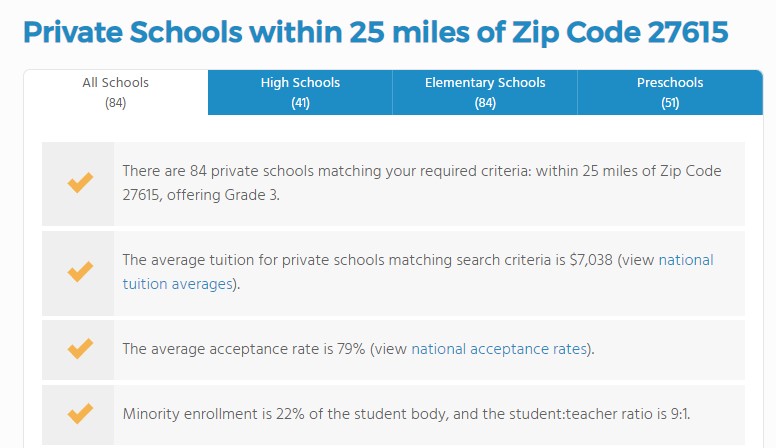Planning for the future growth of your school in these uncertain times is a challenging exercise. The object of this essay is to give you some guidelines to help you and your trusted advisors plan for the next five years. I am writing this for small schools to help you understand the process that large schools with ample resources to hire consultants and strategic planners use to plan their future growth.
Include the following components in your Plan For Future Growth should have
- Develop an overview of what you want to achieve.
- Investigate the competition.
- Examine your organization.
- Develop an implementation plan.
- Develop a marketing strategy.
- Outline the risks your school faces.
- Hold information sessions with members of your school community.
- Track your progress towards your objectives.
Overview
Keep your overview brief yet comprehensive. It should explain the goals of your Plan for Future Growth. For example, if your area is experiencing rapid growth, refer to that as the underlying reason for building your Plan for Future Growth. Then write something like, "Anytown has had an influx of new families at a rate exceeding national averages. As a result, we aim to prepare for the demand for private school seats by adding one class to each grade over the next five years."
Include the important points of your Plan. The overview is a summary, not a detailed list of the things you wish to accomplish.
Investigate your competition.
First of all, know who your competition is. Use Private School Review to search for and identify schools with similar profiles within 25 miles of your school. For example, I input zip code 27615 here in Raleigh, North Carolina, and asked the search tool to show schools within 25 miles of that zip code, and finally, asked it to show schools that had the third grade. The search tool produced 84 schools that I would have to investigate if I were planning for the future growth of my hypothetical school with grades PK-3.
Reviewing this list of 84 schools will eliminate many of them for a variety of reasons. Once you have a shorter list, examine those schools carefully. Drive by their facilities. Scrutinize their websites. Look at their management and boards of trustees. Review what they teach. Look at their extracurricular and athletic programs. Understand what their target market is.

Examine your organization.
Analyze the strengths, weaknesses, and experience of your staff. Understand the depth of their commitment to your long-term goals. Evaluate the advantages and disadvantages of your facilities. Review your curricula, extracurricular activities, and sports programs looking for areas that excel and areas that need improvement. Scrutinize your website and use of social media. Determine what is needed to grow over the next five years.
Develop an implementation plan.
The thorough analysis you and your team have done will be the basis for your implementation plan. Categorize each item on your list with a completion time. For example, if your website that was fresh and cost a fortune in 2014 needs updating, you can contract that project for a fixed cost and completion date fairly easily. Adding a coding class for third graders will pose staffing challenges. But if you live in a high-tech community, you will need to find that teacher with that technical knowledge who loves to teach elementary school students. Document each item carefully. Work through the list with your team. Set your priorities realistically. This part of planning for your future growth will be time-consuming and overwhelming. Spread it over several work sessions of about 90 minutes each. Then everybody will tackle the project with the energy, freshness, and creativity it needs.
Develop a Marketing Strategy.
Word of mouth is always your best marketing tool. Video clips of parents and students talking about what your school means and what it is doing for them can reach a lot of potential new families.
Outline the risks your school faces.
Future risks can include such items as inflation, labor shortages, plant closures, natural disasters, and more. Outline the contingencies needed to offset those risks. While you can't plan for every risk, give it your best shot. Be realistic. Be prepared.
Hold information sessions with members of your school community.
Wile word about your planning for future growth will have gotten out in your school community, take time to hold information sessions with your stakeholders. Don't reveal anything confidential, of course. Be charmingly vague. Remember that anything you say will be repeated, misinterpreted, and possibly even used against you. So, with that in mind, encourage anybody with questions to see you. During that meeting you can answer questions in more detail, all the while taking the person into your confidence for the wellbeing of the school.
Track progress towards your objectives.
You will have short-term and long-term objectives to track. Some of your objectives will be in both categories. Share progress with your team members regularly. They need to know both the wins and the failures.
Conclusion
Planning for future growth is not an exercise in gazing into a crystal ball, although it may seem to be to some stakeholders. You are running a business. That requires everybody on your team to be proactive and prepared to make things happen. Schools that don't plan for future growth inevitably go out of business. You and I have seen that happen. In many cases, that occurred because the people in charge of those schools dithered rather than developed action plans for the future.
If you can afford it, pay for the advice of professionals on an as-needed basis. Legal and tax advice is a highly-specialized commodity. Paying for that advice upfront will protect you when a board asks you five years from now if you consulted an attorney (or a tax adviser). Finally, be prepared to make many course corrections as you implement your plan. These uncertain times come paired with a large dose of unpredictability. That's just the way it is.
Questions? Contact us on Facebook. @privateschoolreview






















